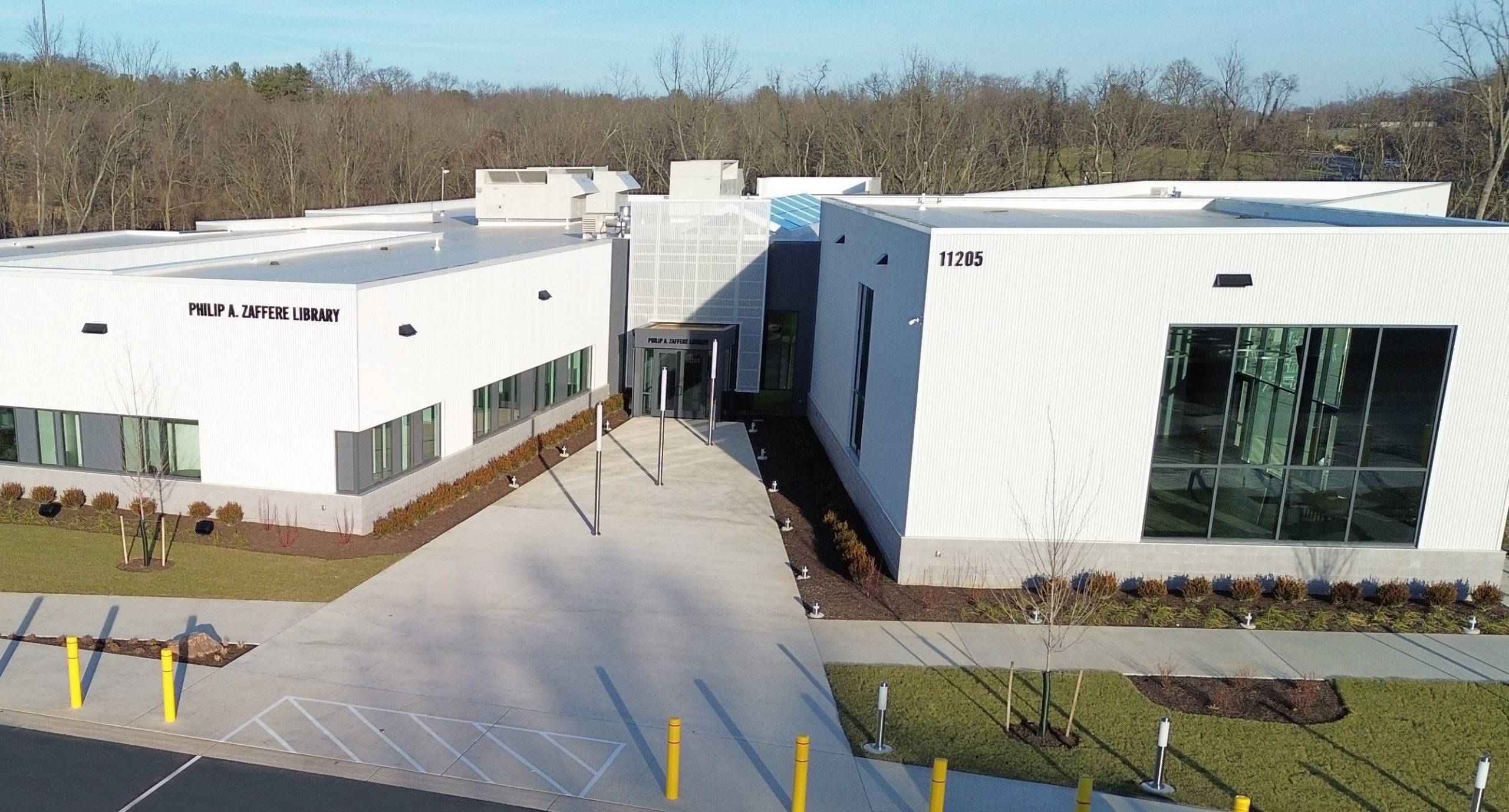Wendy Kimber Ph.D.
Education
- Ph.D., The University of Edinburgh (1995)
- B.Sc., (Honours) Biological Sciences: Wolverhampton University (1988)
Professional Experience
- Stevenson University
Chair and Professor, Biology
2005 – present - University of Maryland University College
Adjunct Professor, Biology
2005-2008 - National Institute on Aging, NIH
Research Scientist
2000 – 2006 - Johns Hopkins University, School of Medicine
Postdoctoral Research Fellow
1998 – 2000 - National Human Genome Research Institute, NIH.
Fogarty Research Fellow
1995 – 1998 - Western General Hospital, Edinburgh, Scotland, UK
Brain Tumor Research Fellow
1994 – 1995 - Medical Research Council Human Genetics Unit, Edinburgh, Scotland, UK
Scientific Officer
1990 – 1991 - Inveresk Research International, Inveresk, Scotland, UK.
Research Scientist
1988 – 1990
Research
My research interests focus on the unique properties of stem cells and the genes that confer these properties. I use mouse embryonic stem cells as my primary research model, but I have recently expanded my research into the model organism, Caenorhabditis elegans, to allow the study of these genes in a whole animal system. By increasing our understanding of the genes which control stem cell differentiation, this research should facilitate the use of stem cell therapy for the treatment of debilitating disorders such as Parkinson’s disease and spinal cord injuries.
I am particularly interested in the gene expression changes which accompany stem cell differentiation and early embryonic development, and I am investigating a number of novel genes which appear to be differentially expressed in undifferentiated and differentiated embryonic stem cells. In addition, all of these genes contain motifs which indicate a role in the process of ubiquitination which involves the addition of small ubiquitin monomers to larger proteins. The ubiquitination of histone proteins is emerging as a novel mechanism controlling transcription and gene expression, and I am investigating the role of this process in stem cell differentiation. By studying the roles of the novel ubiquitination genes in the differentiation of ES cells, I hope to identify new genes and pathways which play a key regulatory role in stem cell differentiation.
Publications
- Kimber, W.L. (2016). Basic Concepts in Molecular Biology. In C. Kasper, T. Schneidereith, & F. Lashley (Eds), Lashley’s Essentials of Clinical Genetics in Nursing Practice (2nd ed.) New York, NY: Springer.
- Uda M, Ottolenghi C, Crisponi L, Garcia JE, Deiana M, Kimber W, Forabosco A, Cao A, Schlessinger D, Pilia G. Foxl2 disruption causes mouse ovarian failure by pervasive blockage of follicle development. Human Molecular Genetics, (2004) 13(11):1171-81
- Sharov AA, Yulan Piao, Ryo Matoba, Dawood B. Dudekula, Yong Qian, Vincent VanBuren, Geppino Falco, Patrick R. Martin, Carole A. Stagg, Uwem C. Bassey, Yuxia Wang, Mark G. Carter, Toshio Hamatani, Kazuhiro Aiba, Hidenori Akutsu, Lioudmila Sharova, Tetsuya S. Tanaka, Wendy L. Kimber, et al. Transcriptome analysis of mouse stem cells and early embryos. PLoS Biology. (2003) 1(3):1-10
- Kimber WL, Piao Y, Tanaka TS, Yoshikawa T, Hamatani T, Carter MG, and Ko MSH (2003). Systematic Analysis of Mouse Preimplantation Development. Mammalian Embryo Genomics, Book chapter, (2004).
- Kimber WL, Puri N, Borgmeyer C, Ritter D, Sharov A, Seidman M, and Ko MSH.
- Efficacy of 2-methoxyethoxy-modified antisense oligonucleotides for the study of mouse preimplantation development. Reproductive Biomedicine Online, (2003) 6(3):316-320
- Tanaka, TS, Kunath T, Kimber WL, Jaradat, SA, Stagg CA, Usuda M, Yokota T, Niwa H, Rossant J, and Ko MSH. Gene expression profiling of embryo-derived stem cells reveals candidates genes associated with pluripotency and lineage specificity. Genome Research, (2002) 12:1921-1928
- Roberts C, Sutherland HF, Farmer H, Kimber W, Halford S, Carey A, Brickman JM, Wynshaw-Boris A, and Scambler PJ. Targeted mutagenesis of the Hira gene results in gastrulation defects and patterning abnormalities of mesoendodermal derivatives prior to early embryonic lethality. Molecular and Cellular Biology, (2002) 22(7):2318-28.
- Dickinson P*, Kimber WL*, Kilanowski FM, Webb S, Stevenson BJ, Porteous DJ, and Dorin JR. (*Equal contribution) Enhancing the efficiency of introducing precise mutations into the mouse genome by hit and run gene targeting. Transgenic Research, (2000) 9(1):55-66.
- Kimber, W.L., Hsieh, P., Hirotsune, S.,Yuva-Paylor, L., Sutherland, H.S., Chen, A., Ruiz-Lozano, P., Hoogsraten-Miller, S.L., Chien, K.R., Paylor, R., Scambler, P.J., and Wynshaw-Boris, A.
- Deletion Of 150 kb in the Minimal DiGeorge/Velocardiofacial Syndrome Critical Region in the Mouse. Human Molecular Genetics, (1999) 8(12): 2229-2237.
- H.S. Bell, W.L. Kimber, M. Li, and I.R. Whittle. Liposome Transfection Efficiency and Toxicity On Glioma Cell Lines In Vitro and In Vivo Studies. Neuroreport (1998), 9: (5) 793-798.
- I.R. Whittle, W.L. Kimber, H.S. Bell, and J.W. Ironside. Glioma Cells Transduced with Selection Transgenes May Not Form Gliomas in vivo and Can Also Inhibit Glioma Formation by Admixed Glioma Cell Lines. Acta Neurochir (1997), 68: 139-143.
- C. Taylor, R. Wadey, H. O’Donnell, C. Roberts, M-G. Mattei, W.L. Kimber, A. Wynshaw-Boris, P.J. Scambler. Cloning and Mapping of Murine Dgcr2 and Its Homology to the Sez-12 Seizure-related Protein. Mammalian Genome (1997), 8: 371-375.
- P. Dickinson, W.L. Kimber, F.M. Kilanowski, B.J. Stevenson, D.J. Porteous, and J.R. Dorin. High Frequency Gene Targeting Using Insertional Vectors. Human Molecular Genetics (1993), 2 (8): 1299-1302.
- J.R. Dorin, P. Dickinson, E.W.F.W. Alton, S.N. Smith, D.M. Geddes, B.J. Stevenson, W.L. Kimber, S. Fleming, A.R. Clarke, M.L. Hooper, L. Anderson, R.S.P. Beddington, and D.J. Porteous. Cystic Fibrosis In The Mouse By Targeted Insertional Mutagenesis. Nature (1992) 359: 211-215.
Teaching
- SCI 100 – New Student Seminar
- BIO 113 – General Biology I: Cell Biology and Genetics
- BIO 113L – General Biology I: Cell Biology and Genetics Laboratory
- BIO 114 – General Biology II: Plant and Animal Structure and Function
- BIO 203 – Microbiology
- BIO 230 – Genetics
- BIO 312 – Developmental Biology
- BIO 330 – Molecular Genetics
- BIO 365 – Independent Laboratory Research in Biology
- BIO 440 – Seminar Topics in Biology
- BIO 450/460 – Senior Research Capstone
- BIO 455/465 – Senior Internship Capstone
DISCLAIMER: The content of this faculty profile page was created, authored, and published by the identified faculty member. Stevenson University (SU) makes absolutely no guarantee as to the currency, accuracy, or quality of information published. The views and opinions expressed on this page or any links made available are strictly those of the author and do not necessarily state or reflect those of SU. The content of this profile page has not been reviewed or approved by Stevenson University.






